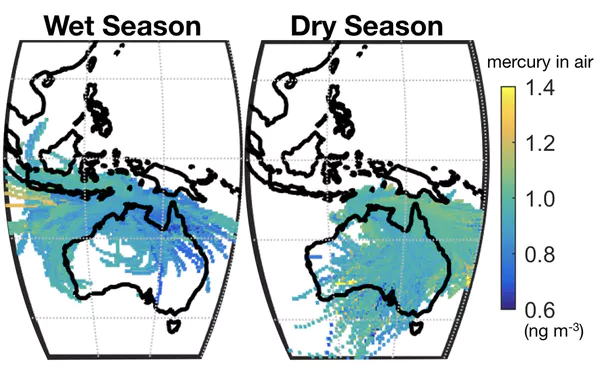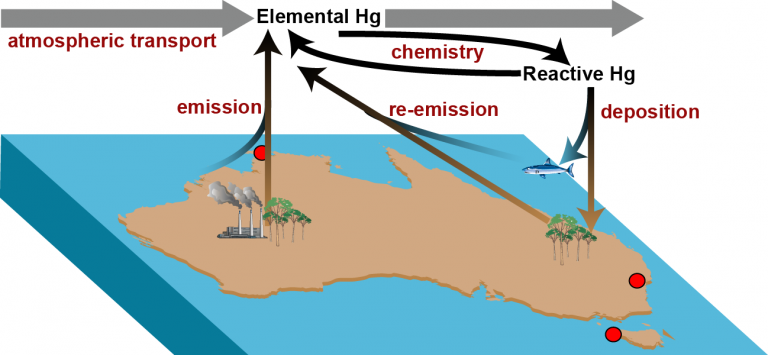
Sources, chemical evolution, and transport pathways of atmospheric mercury
Mercury is a potent toxin that accumulates in foodwebs, with serious consequences for natural ecosystems and human health. While mercury exposure occurs primarily in ocean ecosystems, the atmosphere is the dominant pathway for mercury to spread across the globe (Figure 1). This is because mercury is chemically stable as a gas in air, a property that distinguishes it from other metals and allows it to persist in the atmosphere for 6-12 months. Such a long lifetime in air means mercury is a global pollutant – mercury released to the atmosphere from a given location can be transported for thousands of kilometres before it is transferred to ecosystems. As a result, human activities that release mercury to the atmosphere – like mining and burning coal for electricity – can impact pristine ecosystems far downwind. These activities also have a long legacy: mercury deposited to plants and soil is re-emitted back to the atmosphere over the course of decades, and pristine regions that would otherwise remove mercury from the air become sources of mercury to the air.
Mercury that is emitted to the atmosphere in its stable form (“elemental mercury”) eventually undergoes chemistry that converts it to a reactive form that is rapidly removed from the atmosphere and deposited to ecosystems (“reactive mercury”). The short reactive mercury lifetime means that mercury pollution can also have local impact – emissions in the reactive form can be deposited close to sources.
Over Australia, and indeed much of the Southern Hemisphere, the sources and sinks of mercury in air are poorly understood – due in large part to a lack of mercury measurements. Our team is working to fill this gap with a combination of multi-year monitoring of elemental mercury in air, novel measurements of reactive mercury in air, and model-based interpretation of the measurements.
We are using these multi-disciplinary methods to address scientific and policy-relevant questions including:
- 1. How much do emissions from Australian landscapes (figure 1) contribute to mercury cycling on regional, hemispheric, and global scales?
- 2. To what extent can Australia control its mercury contribution through controls on domestic emissions?
- 3. How are growing mercury emissions from other regions across the Southern Hemisphere impacting mercury cycling in Australia?
- 4. How do the unique conditions over the Southern Ocean and the Antarctic sea-ice zone influence Southern Hemisphere mercury cycling?
-

Figure 1- Simplified atmospheric mercury (Hg) cycle over Australia. Locations of the atmospheric monitoring sites established by members of the Mercury Australia team are shown in red.
